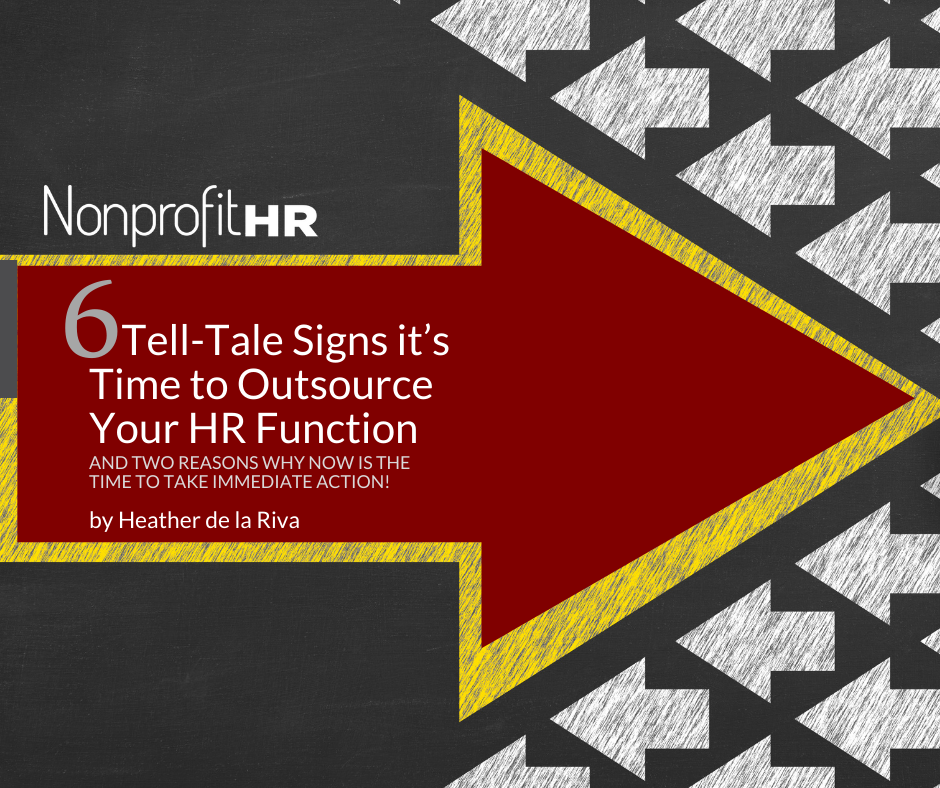WTOP: 5 ways nonprofits can…
By Alicia Schoshinski
An organization doesn’t think twice about asking their finance or accounting function to provide reports or data to support decision-making, so are you ready for when your organization demands the same from Human Resources?
In addition, how often have you heard an HR colleague (or yourself) complain that they are under-resourced in HR? We all know that HR is often trying to make the case for more resources because in many nonprofits, resources are limited and often times HR gets the short end of the stick. But I have to ask, are you providing data and comparisons to support your case?
In most cases, the answer is no.
According to our 2014 HR Staffing, Cost and Structure Benchmarking Survey, only around one in five organizations report having formal measures of HR effectiveness in place and only a little over one third say their organization has a documented HR strategy. Human Resource practitioners need to realize that they must make a business case for what they do and how their efforts support the organization’s mission and strategy. Metrics are the answer.
Why compile and analyze metrics?
- Compiling and analyzing metrics, both on HR’s productivity and the effectiveness of HR programs –how well the organization is optimizing its people resources — is essential for making the case for more HR resources and supporting decision-making.
- Compiling metrics on the HR function and comparing them against other organizations can help an organization determine if they are providing appropriate resources based on staff size.
- Metrics can be a good means to examine the functions or responsibilities being handled by HR and how the reporting relationship aligns with other organizations.
- Comparisons can be made as to how the cost of HR staff per employee stacks up against other nonprofits of similar size and scope and help you make resourcing decisions.
- Thoughtful metrics can help your HR department show how their programs and practices are impacting the organization. For instance, how effective and efficient are your recruiting efforts? Are jobs being filled in a timely fashion? Are they yielding candidates who remain with the organization for a substantial period of time? Are those hires proving to be high performers? What are the high performers demonstrating that the organization should look for in future job candidates?
Finding the time for metrics
Now I’m sure you are saying, “I am already under-resourced, how am I going to find the time to gather these metrics?” I would ask you, “How can you afford not to if you want your case to be taken seriously?” CEOs and other decision-makers respond well to data. After all, they are used to receiving it from other areas of the business and use this data to inform their decisions.
A real world example
A colleague and I recently presented a metrics report to management at one of our clients’organizations In this report we examined staff demographics, hiring, turnover, retention, exit interviews, and other topics. The data provided helped them closely look at the movement of staff, how staff felt, and what our HR strategy was to continue the organization’s HR successes and address any challenges, which was particularly useful in a time of organizational transition.
Benchmarking some of the data against similar organizations and how the organization had done in the past helped to frame the analysis. Analyzing this data against the current and future landscape of the organization provided further context This report was so useful to the management that they asked us to present it again to the next level of management and to the board of directors.
Now it’s your turn
You too can tell a compelling story about HR programs and utilization of staff at your organization. Just be sure to focus on what would be meaningful and valuable to your management. To get started, focus on a few measures and then build upon those in the future. I guarantee that once you provide some data and a related strategy, you will be asked for more. If not, try again until you find something that catches management’s attention.
Many organizations are expecting data from their HR leaders and those on the forefront are developing analytics to predict future outcomes. So what are you waiting for? It’s time to get measuring!





























